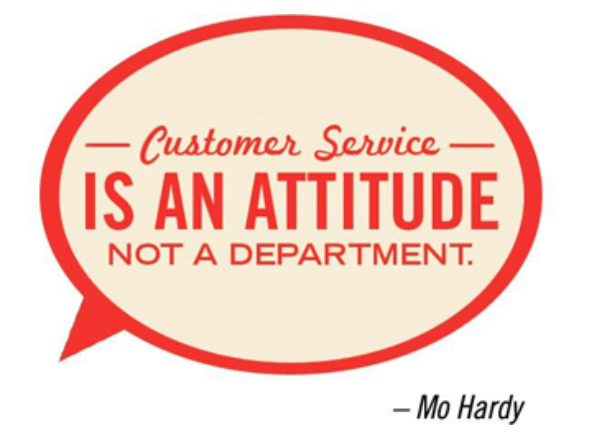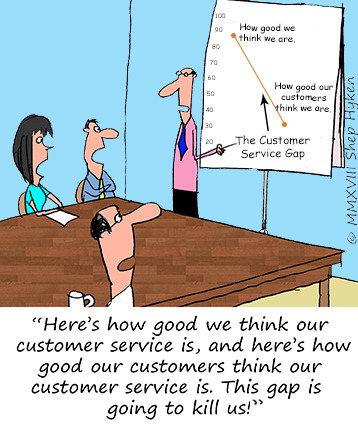Custormer satisfaction and how to deal with complaints
November 20, 2018
How to turn complaints around in our favor and ensure Customer satisfaction. Customers and clients can be tough. Complaints are not something we plan for, because we know we are going to deliver something exceptional, at least we hope to do that.
If you’ve been in the workforce for any length of time, you have most likely run up against a customer who was irate. Your company might have shipped the wrong products. Or, the product that a customer bought from your organization does not work as advertised. Even in the service business, perhaps as a chef making burgers, you most likely encountered someone complaining about the way their food was cooked.
Complaints come in all shapes and sizes and they are directed at all workers from executive directors to the mail room. Nobody likes it. In a perfect world, we provide the most outstanding service that can be done, or the most amazing product ever seen. Complaints are not something we plan for, because we know we are going to deliver something exceptional, at least we hope to do that.
But, this is the real world and not the board game of Life. There are going to be customers who are unhappy. As effective leaders and managers and even associates working in the thick of things, we need to know how to deal with this, especially when it always happens so unexpectedly. Let’s take a look at the following steps to turn these kinds of situations around in our favor:
1.) The first step is to start expecting the unexpected.
I mentioned above that unhappy customers happen unexpectedly, but that’s because no normal human being plans for an event like this. No one is planning to provide poor service. It’s time to begin acknowledging that not only have you provided bad service or a bad product in the past (accidentally, of course), but you are going to do it again. The sheer fact that it’s happened before should be an indication that a future failure is near. This is not a bad thing, because if you know it’s going to happen, you can plan for this evolution. Planning, alone, will put you ahead of the game in dealing with a difficult customer. With a plan, you will have steps to take and you will not be so jarred when you are approached with a dose of irritation.
2.) The second step is to seize the opportunity of having a customer who is upset.
This is probably the most important step. Understand that you are not just responding to a customer who is upset. Instead, treat this as an opportunity! That might sound like a cliché to overcome an obstacle, but there is some merit to this. If you have a client who is being difficult, whether it’s your company’s fault or not, you now have the opportunity to earn a customer for life. Imagine this. If you can actually fix whatever is wrong, or even just make the attempt, you will have taken this person from a place of unhappiness to a world that is better. That is a life-changing event, even if it’s only about a desk lamp purchased at your store that won’t turn on (because it needs a lightbulb). Any time you can change someone’s mood or help them with something they are not happy about, that’s powerful. It can have lasting effects.
3.) The third step is to empathizing with the person
In order to do any of this, your plan should include empathizing with the person. You have to put yourself in their shoes. You might think they should have known the difference between a brown jacket they purchased and a white jacket they wanted, but there are always going to be things you don’t understand. This person might have just been laid off. Maybe they had a relative pass away, recently. Maybe they are color blind! There could be other factors at play here causing the customer difficulties. Instead of judging, no matter how difficult it might be, relate to them and try to understand what they are going through. This sort of thing diffuses more bad situations than almost anything else.
4.) Fix the problem.
You aren’t going to get rid of any difficult customer unless you actually do something about whatever the problem is they are bringing to your attention. At the very least, you need to make the effort and make it genuine. This is where that empathy comes in. You wouldn’t want someone going through the motions to fix something you were unhappy about, would you? If you can’t solve the issue, find someone who can. Let the customer know what you are doing about it and make sure it’s something action-oriented. You need to be doing something about it. Most angry customers just want to have something done, even if it doesn’t cure the issue immediately. Frustration often comes from not even getting this much from some businesses.
5.) Last but certainly not least, do a follow-up.
Get the name and number of that customer, if they will not have their issue resolved right away. Contact that person and let them know when their problem (your problem, actually) has been resolved. If it hasn’t been fixed within an hour, keep tabs on how progress is going and provide that information to the customer. Keep them in the loop. They will be more patient waiting for something to get resolved if they receive continuous feedback and updates. There is an expression out there called “feed the beast”. You have to feed the beast to keep it docile. Keep giving updates, continuously. If you truly want to be recognised, do follow-up with them even after their issue is resolved to see if everything is still acceptable.
Difficult customers are a challenge and they test you in a way that other aspects of business never does. But, don’t let that stop you from providing the world-class service you know you can. A difficult customer doesn’t mean you are not doing your job. It means you just have more to do, and a bridge to build in the process that will enable you to do more later.
Yaseen Amod, Chapter Director of Ideasvoice SA




